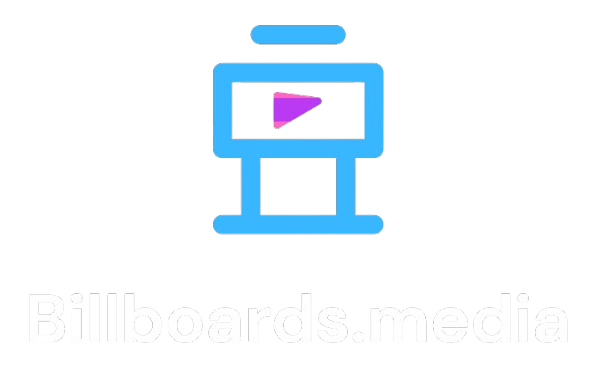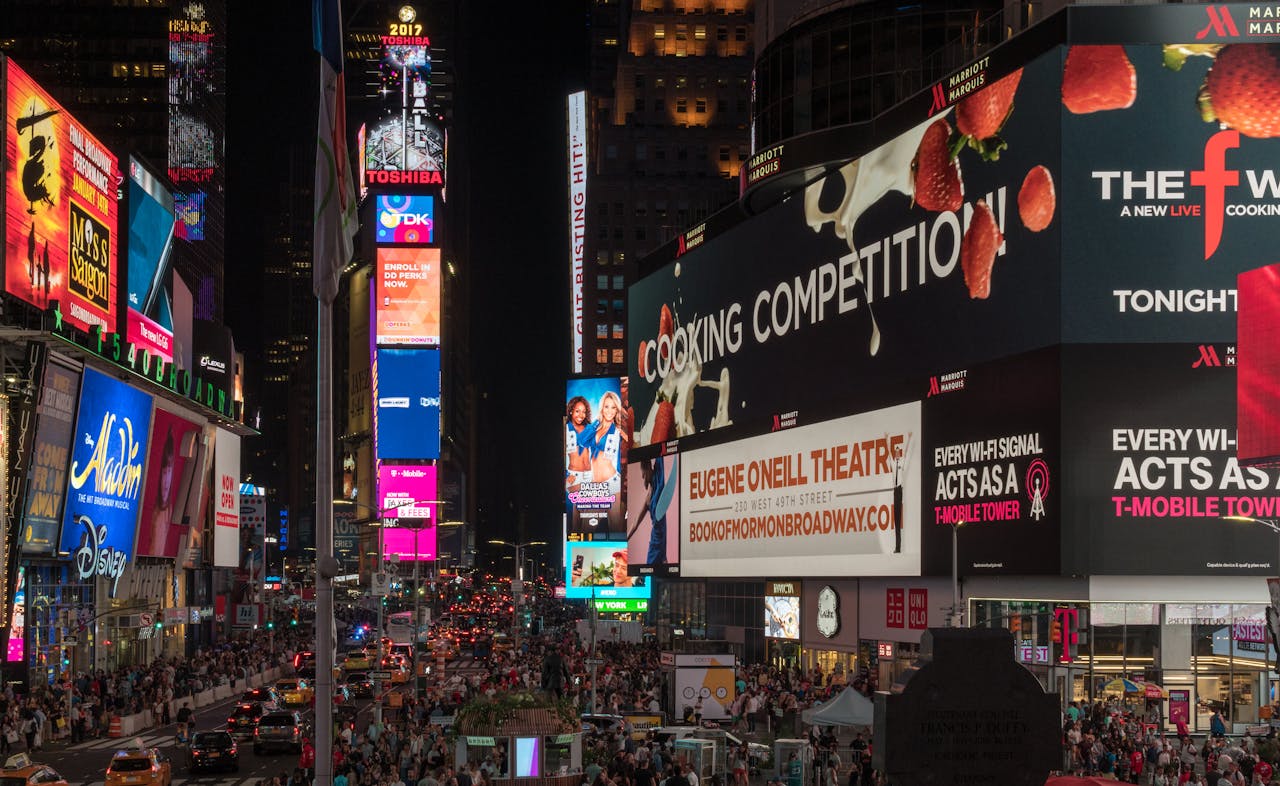In an era when most advertising lives behind a screen, outdoor billboards still command attention in a uniquely powerful way. Whether you’re driving down a busy highway, walking through a city center, or waiting at a traffic light, a well-executed billboard can stop you in your tracks—if only for a few seconds. But what is it about some billboards that make us do a double take while others fade into the background? The answer lies deep in human psychology.
Grabbing Attention in a Split Second
Outdoor billboards face a unique challenge: they have a very limited window to capture attention. In many cases, viewers are moving—driving past, walking by, or glancing up as they go about their day. That means a billboard needs to make an immediate impact. According to research, the average viewing time for a billboard is just 6 to 8 seconds. That’s not much time, which makes first impressions everything.
This is where visual salience comes in. Our brains are hardwired to notice things that stand out from the environment. Bright colors, high contrast, bold typography, and unexpected imagery all trigger the brain’s “what’s that?” response. A splash of red in a grayscale street scene or a humorous image in a sea of bland ads activates our curiosity—and curiosity is one of the most powerful psychological triggers in advertising.
Simplicity is Memorable
When it comes to billboards, less is almost always more. Our brains process simple visuals and short phrases faster and more effectively than complex information. The most successful billboards often feature a single, clear message: a punchy headline, a powerful image, and a call to action or brand name. Anything more can overwhelm viewers or be missed entirely.
This ties directly to cognitive load theory, which suggests that the brain can only hold a limited amount of information at once. A cluttered billboard requires more mental effort to process—and since most people are on the move, they’re unlikely to put in that effort. Clean, minimalist designs allow for almost automatic comprehension, increasing the likelihood that the message sticks.
Emotional Appeal: The Secret Sauce
Humans are emotional beings. We’re far more likely to remember something that made us feel something—whether it was laughter, surprise, nostalgia, or even shock. Billboard designers who understand emotional triggers can craft messages that stay with people long after they’ve passed by.
Consider the famous Chick-fil-A billboards where cows beg you to “Eat Mor Chikin.” The misspelled message, combined with life-sized cows hanging off the board, is humorous and unexpected. That emotional reaction—amusement—creates a stronger memory trace in the brain. According to neuroscientists, emotion enhances memory consolidation, meaning we’re more likely to recall emotionally charged ads than neutral ones.
Repetition Builds Recognition
Another psychological principle that effective billboards tap into is the mere-exposure effect. This concept suggests that the more we see something, the more we tend to like it—or at least recognize and remember it. Billboards, being fixed in high-traffic areas, are well-positioned to take advantage of this.
Even if someone doesn’t consciously engage with a billboard the first time, repeated exposure can build familiarity over time. Eventually, that brand becomes a mental default, influencing future purchase decisions. This is especially useful for local businesses trying to gain a foothold in their communities or larger brands reinforcing identity.
The Role of Contrast and Color Psychology
Color is another critical factor in billboard effectiveness. Certain colors evoke specific emotions—red can create urgency, blue conveys trust, yellow grabs attention, and green suggests growth or calm. Strategic color use can align a billboard’s tone with its message, making the design feel cohesive and purposeful.
Contrast, both in color and content, also drives attention. For instance, placing a bright yellow ad against a blue sky or using white text on a deep black background can make a billboard stand out dramatically. Our visual system naturally detects contrast as part of its threat-detection mechanism—what stands out might be important, so we look at it first.
Humor, Surprise, and Novelty
Another trick in the psychological playbook is novelty. Our brains are wired to pay attention to things that defy expectation. A billboard that incorporates a 3D object, breaks the physical frame, or uses witty wordplay can generate surprise—and that leads to engagement.
Humor is especially effective when used appropriately. It builds a quick emotional bond and increases the chance of word-of-mouth sharing, even offline. A clever joke or visual pun sticks in the memory because it requires a little cognitive engagement to “get it,” and that effort reinforces retention.
Location, Location, Psychology
The physical location of a billboard affects how it’s perceived. A fitness billboard near a fast-food area? That contrast can be psychologically striking. An inspirational message on a long, dull highway? That can feel serendipitous. Effective marketers think about contextual relevance—how the surroundings can enhance or interact with the ad’s message.
Timing matters too. A billboard about allergy medicine in spring or a holiday sale ad in December leverages temporal relevance, increasing the chances of immediate resonance and action.
Calls to Action and Next Steps
Even with all these psychological elements at play, a billboard without a clear next step can fall flat. While it’s not always about making a sale on the spot, a well-crafted call to action (CTA)—even something as simple as a website or hashtag—can turn fleeting attention into deeper engagement.
Modern billboards often blend physical and digital engagement, using QR codes or short memorable URLs to extend the viewer journey. This takes advantage of behavioral momentum, converting initial interest into further action.
Final Thoughts
At first glance, a billboard might seem like a basic medium in today’s tech-heavy world. But behind the best outdoor ads is a deep understanding of human psychology. From grabbing attention in seconds to using emotion, repetition, and visual contrast, effective billboards work not by accident, but by design.
In a landscape where people are bombarded with content from all directions, the humble billboard continues to punch above its weight—precisely because it appeals to the instincts and patterns that shape how we think, feel, and remember. So the next time you find yourself doing a double take on the highway, remember: that’s psychology at work.


Leave a Reply